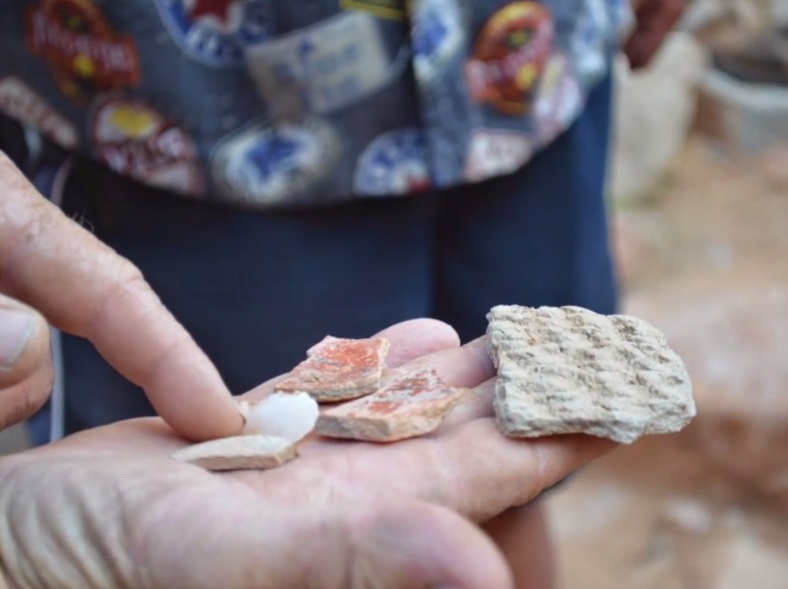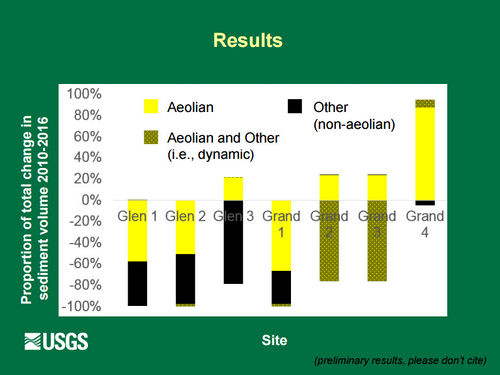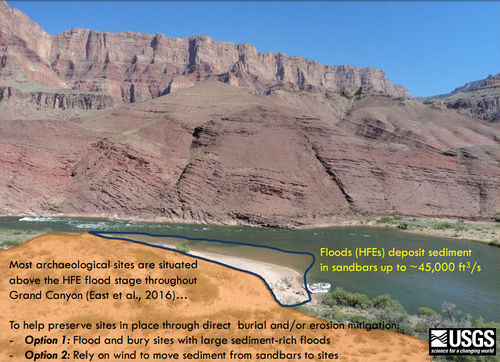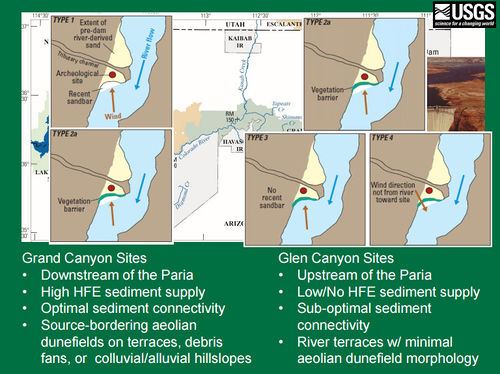Difference between revisions of "CULTURAL"
Cellsworth (Talk | contribs) |
Cellsworth (Talk | contribs) |
||
| Line 93: | Line 93: | ||
|style="color:#000;"| | |style="color:#000;"| | ||
| − | *Does | + | *Does aeolian sand transport research support the use of anthropogenic sand bar building as a means to provide a source of aeolian sands to preserve and protect archaeological sites? |
*Or would current stabilization measures carried out by the NPS be more likely to be successful, predictable, and immediate at protecting archaeological sites? | *Or would current stabilization measures carried out by the NPS be more likely to be successful, predictable, and immediate at protecting archaeological sites? | ||
Revision as of 12:25, 17 December 2019
|
|
Cultural and Archaeological ResourcesThe lower reaches of Glen Canyon and the river corridor through Grand Canyon National Park, Arizona, have been used by humans for at least 13,000 years. Today, at least nine contemporary Native American Tribes claim traditional cultural ties to this area. Grand Canyon National Park contains more than 4,000 documented prehistoric and historic sites, and about 420 of these sites are located in proximity to the Colorado River. The lower reaches of Glen Canyon contain an additional 55 sites. In addition to archaeological sites, cultural resources along the Colorado River corridor include historic structures and other types of historic properties, as well as biological and physical resources that are of traditional cultural importance to Native American peoples such as springs, unique landforms, mineral deposits, native plant concentrations, and various animal species. LTEMP Resource Goal for Archaeological and Cultural ResourcesMaintain the integrity of potentially affected NRHP-eligible or listed historic properties in place, where possible, with preservation methods employed on a site-specific basis. Desired Future Condition for Cultural ResourcesPrehistoric Archaeological Sites and Historic Sites: |
| Tribal Ecological Knowledge |
Cultural Resources Library |
Tribal Perspectives |
|---|




